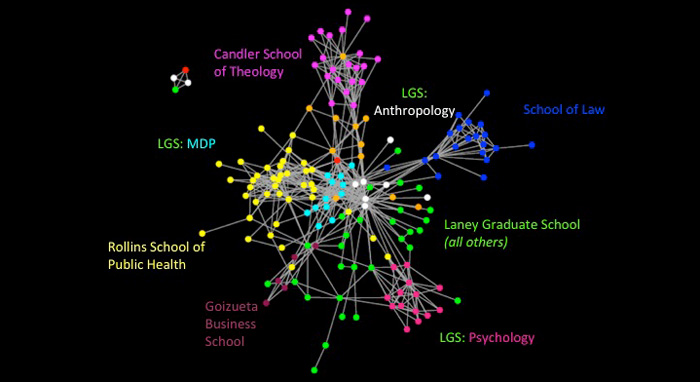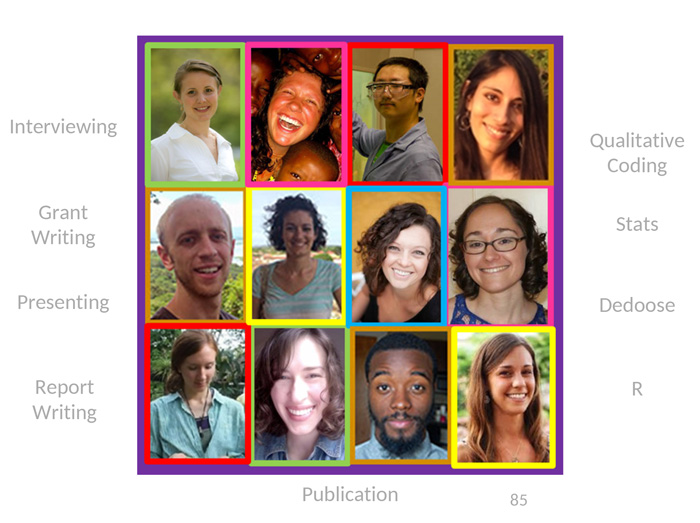MDP students key to graduate student sustainability network

Back in the summer of 2014, a group of Emory MDP students piloted a study looking at sustainability networks across Emory University. The study was the brainchild of Emory Anthropology PhD student, Ioulia Fenton. The anthropologist was interested in how social network analysis (SNA) could help “get to know our own community” at Emory, “and by identifying who is who, we can learn about where clusters or gaps in the sustainability network exist”. With the help of MDP faculty Dr. Kristin Phillips, she recruited a team of research assistants, including MDP students: Melanie Aleman ('16), Alexandra Gordon (‘17), Katie Hiebert (‘16), Lauren Reef (‘16), Robert Shannon (‘16),Barrett Smith (‘16), and Tanya Witlen (‘16). The SNA project has been supported by two years of funding from the Emory Sustainability Incentives Fund.
Data collection took place during the spring of 2015 and analysis during the summer. The team has presented preliminary findings at several events: in October 2015, Ioulia presented at the national Association for the Advancement of Sustainability in Higher Education (AASHE) Conference in Minneapolis; in November, Lauren presented at the Georgia Campus Sustainability Network in Macon; internally to Emory, the team was invited to present the results at a meeting of Sustainability Representatives, a group of sustainability-dedicated staff.
To analyze and visualize their data, the research team used “R”, a free statistical and graphics platform. Using algorithms, R provides a wide variety of statistical, linear and nonlinear modeling, classical statistical tests, time-series analysis, classification, and clustering. The initial data included over 700 individuals in the network, including staff, faculty and students, and over 600 people who collaborate on sustainability work.

“We are starting with the assumption that collaboration across different groups is a good thing,” said Fenton. The study found that different groups and schools collaborate or interface in different ways. The graduate student community is more clustered than the rest, with several sub-groups of sustainability collaborators that are relatively loosely connected. This might be due to structures of student government that prohibit collaboration, or how students’ time is focused. MDP students are part of the central cluster. They provide vital connections to several other groups, playing a connecting role across schools. For example, they help link together Laney Graduate School and Rollins School of Public Health, and have bridging connections with students at Candler School of Theology and Goizueta Business School. “At least part of the answer lies in the truly interdisciplinary nature of the MDP experience: unlike other programs, MDP students are not only encouraged, but required, to take courses in different units of Emory University to prepare them to be well-rounded professionals who can communicate with specialists from different fields”, hypothesized Fenton. In fact, the study also identified one particular MDP alum as top ten to both centrality (number of connections) and betweenness (bridging role), measures of the position of individuals in any given network.
To learn more about theMapping Emory's Sustainability Social Network and have your say on what the results mean, you can register for one of their February 2016 Community Participatory Analysis and Engagement sessions here.
Update Feb 14th: Emory News Center released this article on February 11th.
Photo 1: Map showing MDP as a central cluster
Photo 2: Sustainability mapping team collage
